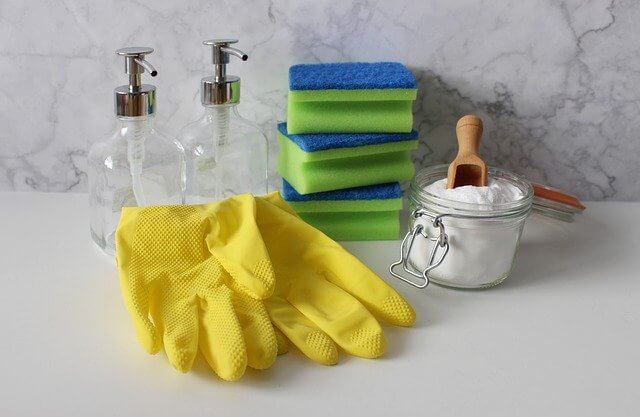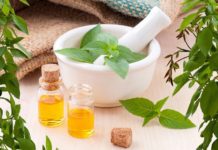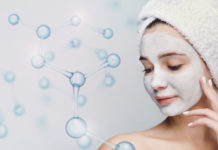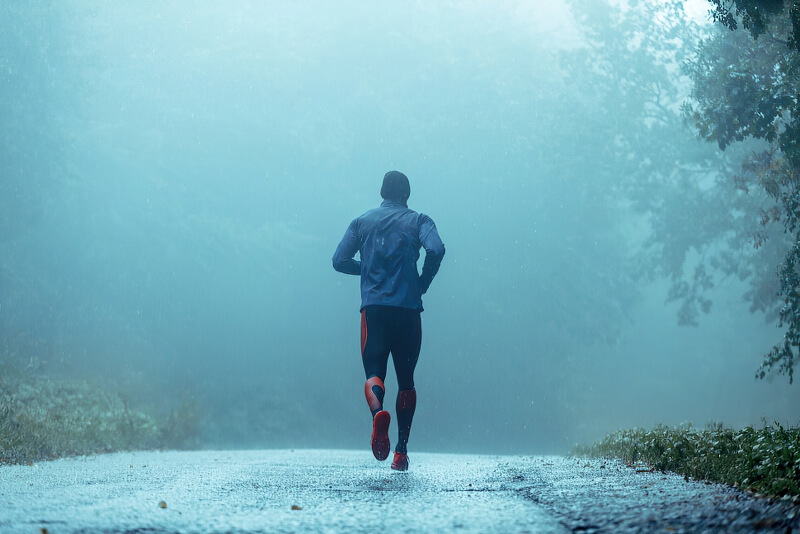Cleaning products are often advertised for their efficiency in killing harmful microorganisms. Ironically, using them isn’t totally safe either. The mere cans alone could explode. Some of them are also loaded with toxic chemicals.
Instead of relying on cleaning chemicals, choose safer homemade alternatives. Aside from being safer, the following DIY cleaners are also cheaper and more environmentally friendly. They’re easy to make as well.
Citrusy Vinegar Multi-Purpose Cleaner
For this cleaner, prepare chopped rinds of one lemon and a sprig of parsley. You’ll mix them along with two cups of white vinegar and two cups of water. Put the mixture in a spray bottle. Shake it and store for a week before using.
The white vinegar can work as a disinfectant. It’s ideal for cleaning appliances, carpets, mats, glasses and toilet bowls. It also helps neutralize odors. The lemon rinds and parsley leave a refreshing scent to your home. The former also boosts the vinegar’s ability to erase stubborn stains.
However, you shouldn’t use this cleaner for solid wood furniture and clothes iron. Any acid-based cleaning solution doesn’t also go well with granite and marble.
Scented Castile Soap and Borax Cleaner
This one may require a trip to the supermarket unless you have borax, washing soda and liquid Castile soap at home. The first two are usually placed on the laundry products section. As for the third ingredient, you may find it near cleaners or personal care products.
You’ll need two teaspoons of each of the three ingredients to make a cleaner. Use a glass bowl to mix them. Add 10 drops of lavender essential oil for fragrance. Then, gradually pour a liter of hot water. Stir evenly for a few minutes. When it no longer feels hot, pour it on a spray bottle.
While fragrant, the essential oil can cause irritations when it splashes to your skin. To avoid that, wear gloves as you make the cleaner and when you use it to tidy up your kitchen. This cleaning solution is also ideal for bathroom fixtures and walls.
Hydrogen Peroxide and Vinegar Cleaner
Vinegar is effective for managing odors and grime. However, it doesn’t stand a chance against the more harmful bacteria. To boost the efficiency of vinegar, combine it with hydrogen peroxide (3%).
In the past, the said chemical was often included in a first aid kit. Later on, it was discovered applying hydrogen peroxide could prolong healing period. It would also lead to more noticeable scars. Despite all of these, it’s still worth to keep a bottle.
You can add a few drops to a cleaning solution to make it more powerful against pathogens and mold. Together with vinegar, it can also erase the toughest of stains in clothes.
Fragrant Disinfectant
Make your home safer, more fragrant and more relaxing with the help of essential oils. Essential oils are often touted for their health benefits. They can further ensure your health by killing microbes in your home.
To make a cleaning solution out of essential oils, prepare a spray bottle and 16 ounces of hydrogen peroxide (3%). Next, add 1/2 teaspoon of lemon essential oil, 1/2 teaspoon of lavender essential oil and 1/4 teaspoon of peppermint essential oil. Secure the nozzle of your bottle and then shake it.
Spray this to grime, stains and discolorations in your home. Wait for several minutes before wiping them.
All-Purpose Cleaner Out of Dishwashing Liquid
Dishwashing liquid isn’t just limited for cleaning kitchen wares. Mixing it with water will give you a safe and efficient cleaner for your walls, floors and ceilings. Once you’re done wiping the cleaning solution, wash them using clean water. Use rugs to dry the floors and walls.
Additional Tips
You should use a new spray bottle for each cleaning solution you make. Reusing old ones may affect the solutions. Some may simply have unpleasant smell. Others may turn out to be toxic.
Right after making a cleaning solution, label the spray bottle immediately. Write the date when you made it as well. This will help prevent you from mixing them up. If you can find spray bottles of different sizes and colors, you might want to stock on them, too.
While homemade cleaners are safer than cleaning products, it doesn’t mean you can just leave them anywhere. Keep the excess in a closed compartment. If you have kids or pets, make sure the compartment is locked.
Moreover, don’t try to make a year worth of supply. The cleaning solutions may no longer be effective after two months. You can just make one per week.
It will also be ideal to print a copy of the recipes and keep it in the kitchen. That way, you’ll be sure that you’re adding the right amounts of ingredients.
Feel free to experiment with organic ingredients to create your own cleaner. Think of vinegar and citrus fruits. Before you mix chemicals like borax and baking soda, search about their possible products first. These are relatively safe but they can turn out dangerous when blended with certain chemicals.








